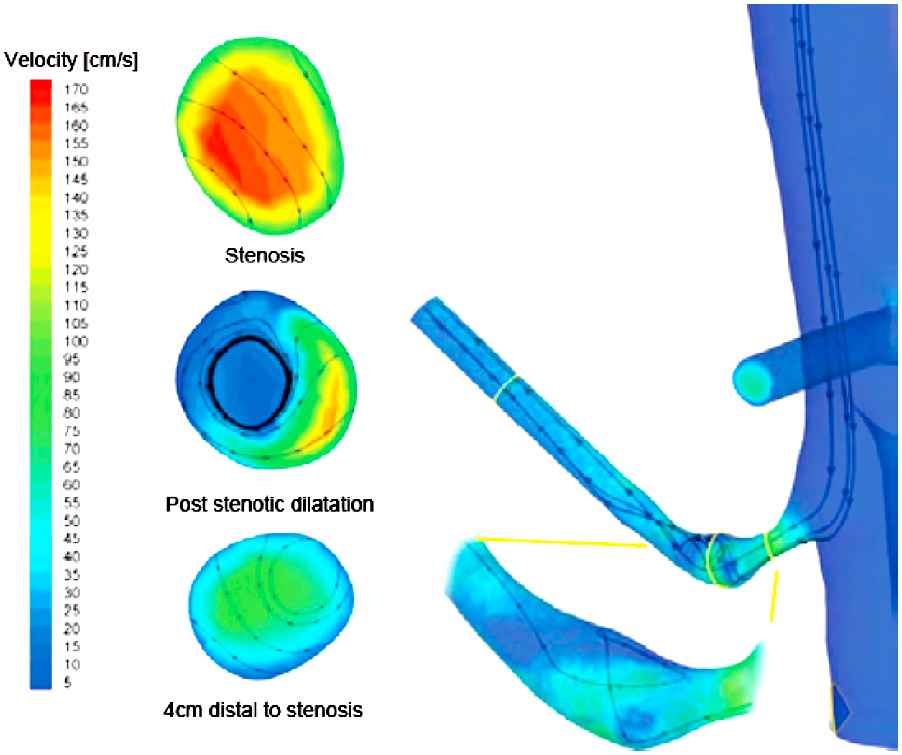07.02 TOWARDS NON-INVASIVE ASSESSMENT OF RENAL ARTERY STENOSIS SEVERITY IN THE INDIVIDUAL PATIENT WITH THE AID OF NUMERICAL COMPUTER SIMULATIONS
- DOI
- 10.1016/j.artres.2008.08.304How to use a DOI?
- Open Access
- This is an open access article distributed under the CC BY-NC license.
Introduction: Severe renal artery stenosis is responsible for 5% of all hypertension cases. Treatment of the stenosis is often decided upon catheterisation, with a pressure gradient (DP) of 10mmHg used as cut-off, thus requiring invasive measurements. The aim of the present study was to assess the feasibility and accuracy of a non-invasive estimate of DP through numerical simulation in a patient-specific model.
Methods: We constructed a computer model of the abdominal aorta, coeliac trunk, mesenteric superior aorta and two renal arteries from a patient with unilateral renal stenosis (77% area stenosis). Images were obtained from MR angiography scans and segmented to obtain the 3D patient-specific model. Blood flow was simulated assuming an aortic inflow rate of 2.7l/min and prescribed outflow rates at the different arterial outlets. The calculated DP was compared to in vivo measurements.

Results: The numerical calculations yielded a DP of 11.7mmHg, which was in excellent agreement with the value of 10.5mmHg measured in vivo in the same patient (with pressure guide-wires) and with values measured in a silicon hydraulic bench model of the same geometry. A parameter study demonstrated a rapid increase in DP beyond 60% stenosis. In the post-stenotic dilatation zone, secondary flow patterns with recirculation were observed.
Conclusion: These promising results demonstrate the feasibility and utility of patient-specific computer simulations in the diagnosis of individual patients, although further steps will be necessary to include pulsatile blood flow, distensible walls and patient-specific boundary conditions.
Cite this article
TY - JOUR AU - J. Kips AU - S. Van Bergen AU - B. Drieghe AU - D. Devos AU - K. Van Canneyt AU - B. Van der Smissen AU - B. Trachet AU - P. Verdonck AU - P. Segers PY - 2008 DA - 2008/09/15 TI - 07.02 TOWARDS NON-INVASIVE ASSESSMENT OF RENAL ARTERY STENOSIS SEVERITY IN THE INDIVIDUAL PATIENT WITH THE AID OF NUMERICAL COMPUTER SIMULATIONS JO - Artery Research SP - 91 EP - 91 VL - 2 IS - 3 SN - 1876-4401 UR - https://doi.org/10.1016/j.artres.2008.08.304 DO - 10.1016/j.artres.2008.08.304 ID - Kips2008 ER -
